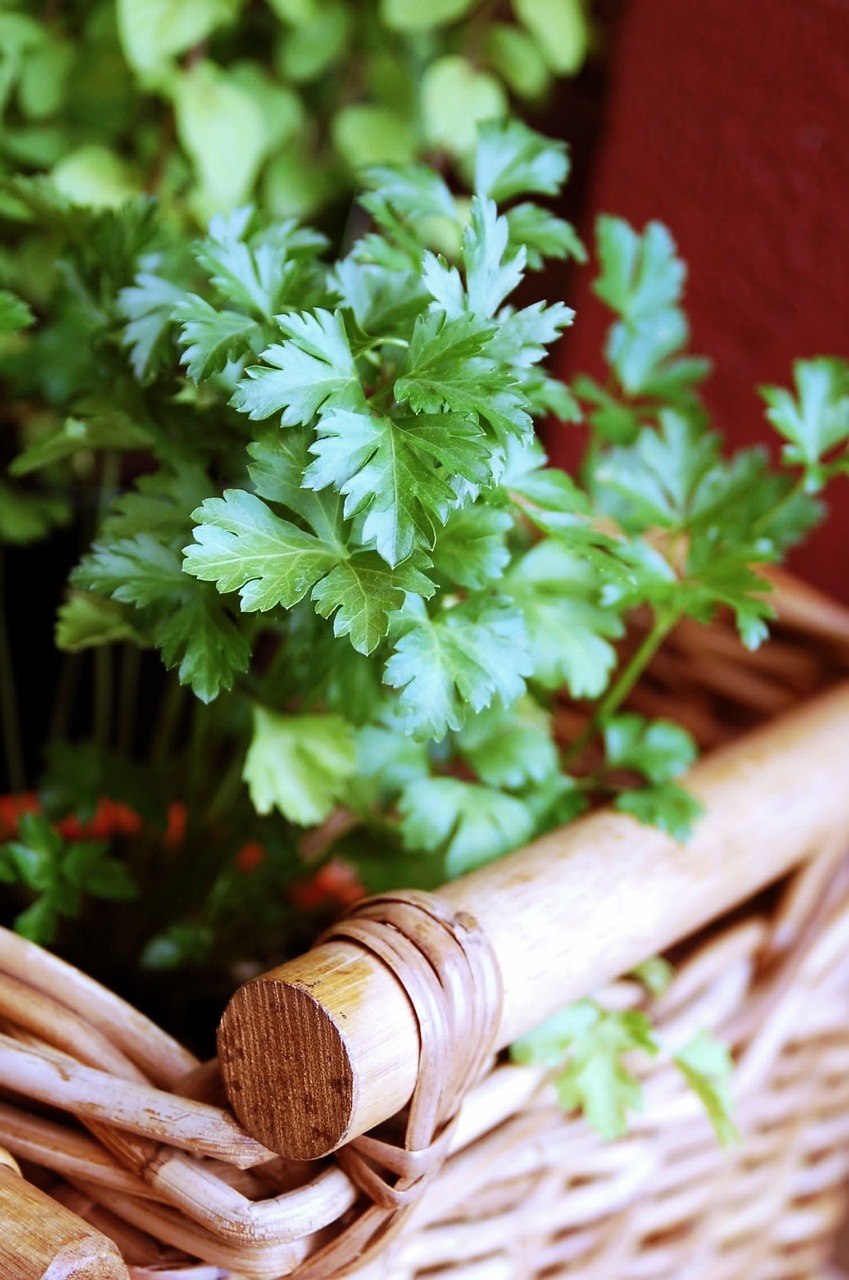Parsley, a Versatile Herb

Searcy, Ark. –
Parsley can be grown in all Arkansas home gardens. It has the unique ability to blend flavors and is frequently used in fine herb mixtures. It is also used as a garnish for flavor in salads, soups and stews; cooked with other vegetables; and dipped in a light batter and served as a deep-fried vegetable. The parsley plant is prized for its ornamental value and may be grown in pots and other containers as well as in the garden.
Root Parsley: An Additional Option
Root parsley, which is grown in the same manner as carrots, is usually washed, cubed and added to soups and stews.
Planting Parsley: Timing and Methods
Parsley is hardy, and seeds may be planted as soon as the soil is warm in the spring. Since parsley is slow to germinate, it should be soaked overnight before planting. Seedlings may be started indoors or in a protective cold frame and transplanted in the garden.
Importance of Fresh Seeds
Parsley seed is short-lived, and fresh seeds are important in establishing a crop. Plant 10 to 15 seeds per inch of row no more than 1/4 inch deep. Thin the seedlings to 4 to 6 inches apart (the seedlings of root parsley are usually thinned to 3 to 5 inches apart). Allow 12 to 18 inches between rows.
Harvesting and Storing Parsley
Parsley is usually picked leaf by leaf for daily use after the plants are well established. When the summer supply is adequate, the leaves may be harvested and dried. To store parsley leaves, wash, drip dry and place in a plastic bag or wide-mouthed jar in the refrigerator. Parsley may be covered lightly with straw and picked continuously over winter.
Growing Parsley Indoors for Winter Use
You can also carefully dig a few plants, pot them in 4- to 6-inch pots and continue to grow them in the house for a fresh winter supply. The plants need a cool location and ample light. Discard these plants the following spring. If they are set outside, the leaves will be tough and strong in flavor, and the plant will develop seedstalks.
Growth Timeline and Seasonality
Parsley requires 70 to 90 days from seed to a harvestable plant. Plant in late fall for winter harvest or in late winter for spring and early summer harvest. Parsley is a biennial, which means it grows a plant the first year and sends up a seedstalk or flowers the second year. If grown in an area protected from excessively hot temperatures or excessively cold temperatures, parsley can be harvested well into the second year.
Dealing with Temperature Extremes
When a flower stalk is initiated, remove it and continue harvesting the mature leaves. If parsley is forced to grow for long periods at temperatures above 90 degrees F, growth is greatly reduced, and death may occur. Parsley is cold hardy and can overwinter. If planted too early in the spring, cold temperatures may cause it to send up a flower stalk during its first season of growth.
Recommended Cultivars for Arkansas:
- Curled Parsley:
- Extra Curled Dwarf - Dark green, deeply cut, curled leaves
- Forest Green - Combination of double and triplecurled variety. Holds color well, good flavor and very productive.
- Green River - Doublecurled leaves stay curly even in heat. Great for drying.
- Plainleaf Parsley:
- Plain Leaf - Dark green, deeply cut. Celeryleaf type.
- Giant of Italy - Huge, dark green leaves with strong stems, sweet flavor.
- Dark Green Italian - Strongtasting celeryleaf type. Use dry or fresh. Stiff, upright stems for bunching.
- Root Parsley:
- Hamburg - Slow to germinate, produces smooth white roots.
By Sherri Sanders
County Extension Agent - Agriculture
The Cooperative Extension Service
U of A System Division of Agriculture
Media Contact: Sherri Sanders
County Extension Agent - Agriculture
U of A Division of Agriculture
Cooperative Extension Service
2400 Old Searcy Landing Road Searcy AR 72143
(501) 268-5394
ssanders@uada.edu
The Arkansas Cooperative Extension Service is an equal opportunity institution. If
you require a reasonable accommodation to participate or need materials in another
format, please contact your County Extension office (or other appropriate office)
as soon as possible. Dial 711 for Arkansas Relay.
Pursuant to 7 CFR § 15.3, the University of Arkansas System Division of Agriculture
offers all its Extension and Research programs and services (including employment)
without regard to race, color, sex, national origin, religion, age, disability, marital
or veteran status, genetic information, sexual preference, pregnancy or any other
legally protected status, and is an equal opportunity institution.